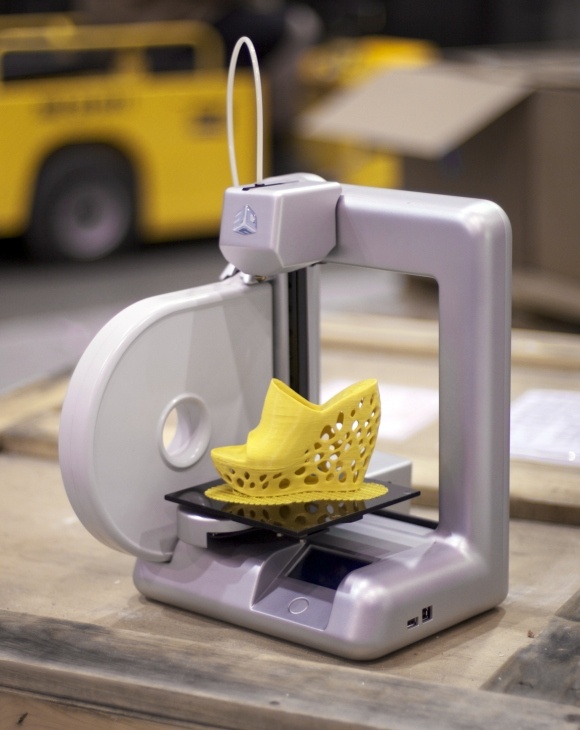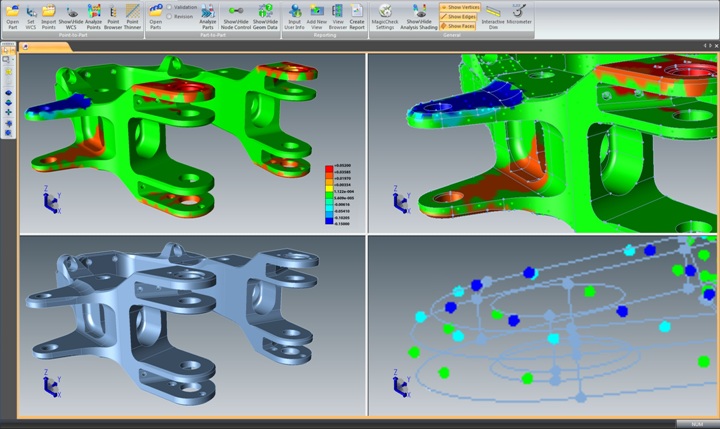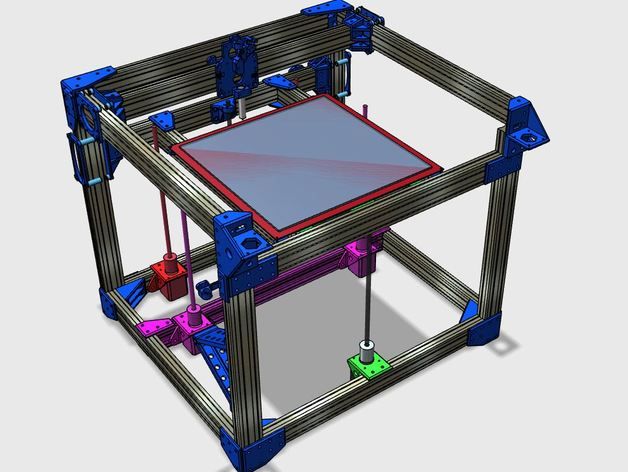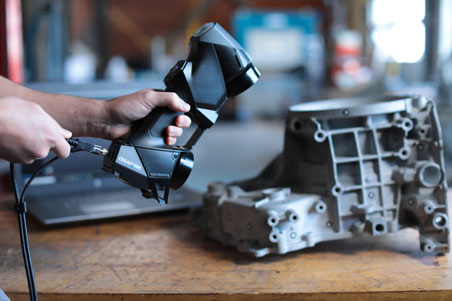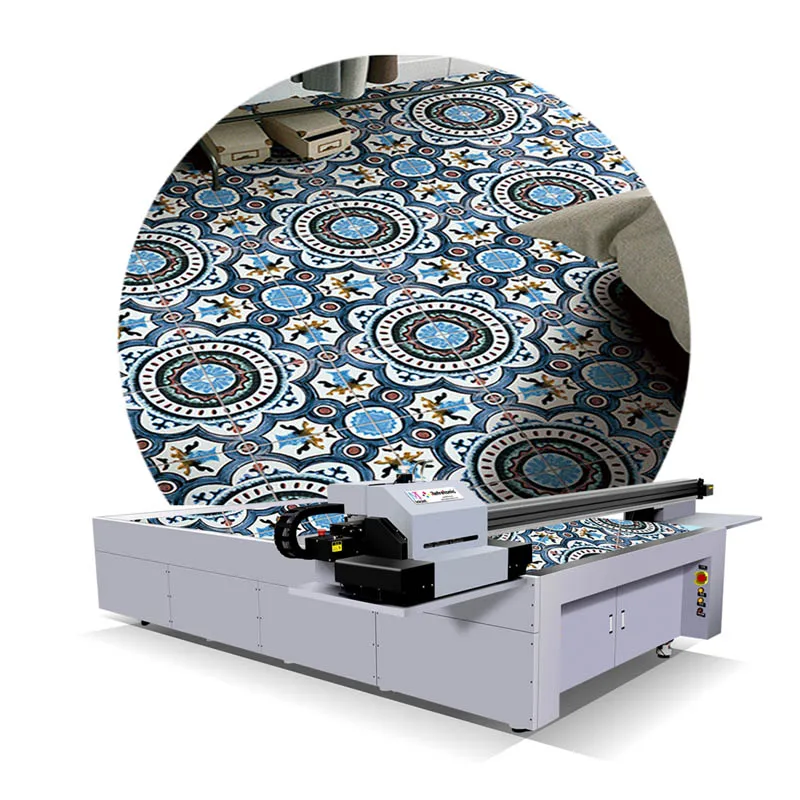3D printer dream maker
DREAM Maker OverLord PRO Delta-Style 3D Printer
$949.00 – $1,169.00
OverLord Pro
- Build Volume 170mm x 260mm.
- Print Speed 100mm/s.
- Layer Resolution 100-200 microns.
Categories: 3D Printing, Desktop 3D Printers, FDM 3D Printers, Professional 3D Printers SKU: OVERLORD-PRO Tags: desktop 3d printer fdm 3d printer professional 3d printer
- Description
- Additional information
- Reviews (0)
Description
DREAM Maker OverLord PRO
The OverLord PRO is the first professional 3D Printer that combines the simplicity of using, the beauty of design and the uncompromising performance as a consumer, and prosumer desktop 3D Printer. With OverLord PRO, you can bring your ideas to life, make products, create toys, shape your designs, start a business, educate kids, host workshops and unleash unlimited possibilities.
Features
- Multiple colors: Multi-color printing is no longer a privilege of pricy professional 3D printers. With OverLord PRO, you can create multi-color models in an easy way. No re-rendering the 3D model or code editing needed. You can switch colors anytime during print and make the model as colorful as you wish.
- Ready to CREATE: OverLord PRO was designed to be extremely user-friendly, and easy to use. It comes fully assembled and tested, and requires little configuration during first time use. Once you get the printer, just unpack, plug in power and follow the on-screen prompt to setup. The whole process takes less than 5 minutes, and you are ready to go!
*To make life easier, we’ve built a special system which provides auto-leveling and auto-calibration. This means every time you start the printer, it sets up automatically.
This means every time you start the printer, it sets up automatically.
- Dream BIGGER, make BIGGER than ever: There are many reasons why we chose to build OverLord PRO upon Delta mechanism, bigger build volume is definitely among the first. OverLord Pro can handle objects 170 millimeters wide and 260 millimeters tall, 30% taller than the object normal printers can do. Besides its expanded build volume, this mechanism has a proven record of being highly efficient and economic, requires no long-term maintenance, and is elegant in motion.
- Print PRO: With OverLord, you don’t necessarily have to be an expert to create professional-quality, realistic products. There are just many ways to help you make stunning things.
- 100 Microns of Precision: OverLord uses premium stepper motors to print objects of superb quality, at a layer resolution of 100 microns.
- Heated Plate: The heated plate allows you to print PLA and ABS.
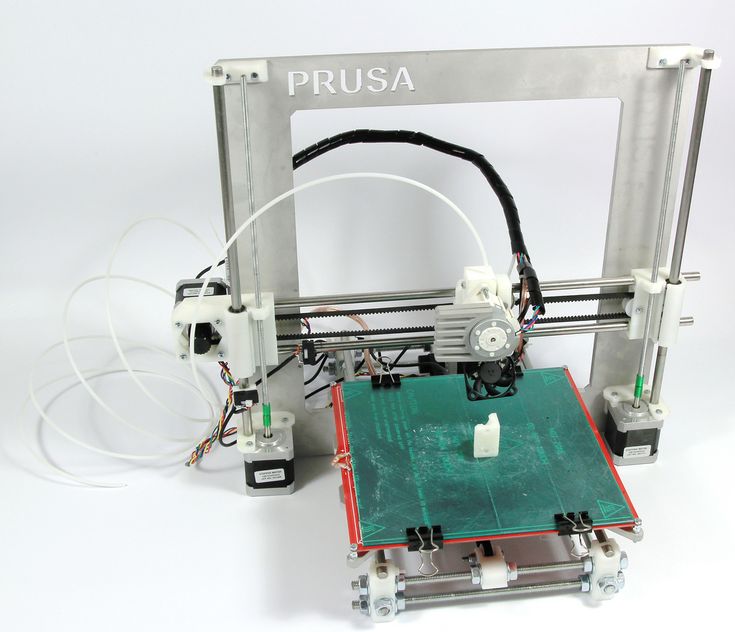 You can explore more exciting new materials with OverLord in future.
You can explore more exciting new materials with OverLord in future.
- Your creativity is TRIPLE INSURED: As a consumer desktop 3d printer, OverLord must be stable enough to deliver consistent quality result on a daily basis. Therefore, we redesigned both the hardware and software to ensure your creation will never be interrupted.
- Break-resuming: The unique break-resuming feature allows you to stop wherever you want during printing, but no need to start the whole process over again. This means you can leave where it is, have a meeting, watch a game, even take a holiday and then continue printing after coming back.
- Power Protection: A power blackout or misoperation could sometime ruin the whole process – but that’s never gonna happen with OverLord. With built-in power protection, you can resume wherever it is after any sudden power break, saving both of your time and ruined mood.
- Built to last: To ensure the precision in printing, we require precise parts.
 All parts are injection molded and fit perfectly. We also used aerospace alloy to make OverLord strong enough for any possible collisions or shock.
All parts are injection molded and fit perfectly. We also used aerospace alloy to make OverLord strong enough for any possible collisions or shock.
- Style with ATTITUDE: OverLord’s styling is both futurism and minimalism. Designed to look great in your home, office, lab, or classroom, OverLord fits nicely in almost any setting.
OverLord Pro 3D Printer - Classic Blue w/ EU Adapter-DFRobot
We created OverLord to be unique. OverLord is the first 3D Printer that combines the simplicity of using, the beauty of design and the uncompromising performance as a consumer desktop 3D Printer.
With OverLord, you can bring your ideas to life, make products, create toys, shape your designs, start a business, educate kids, host workshops and unleash unlimited possibilities.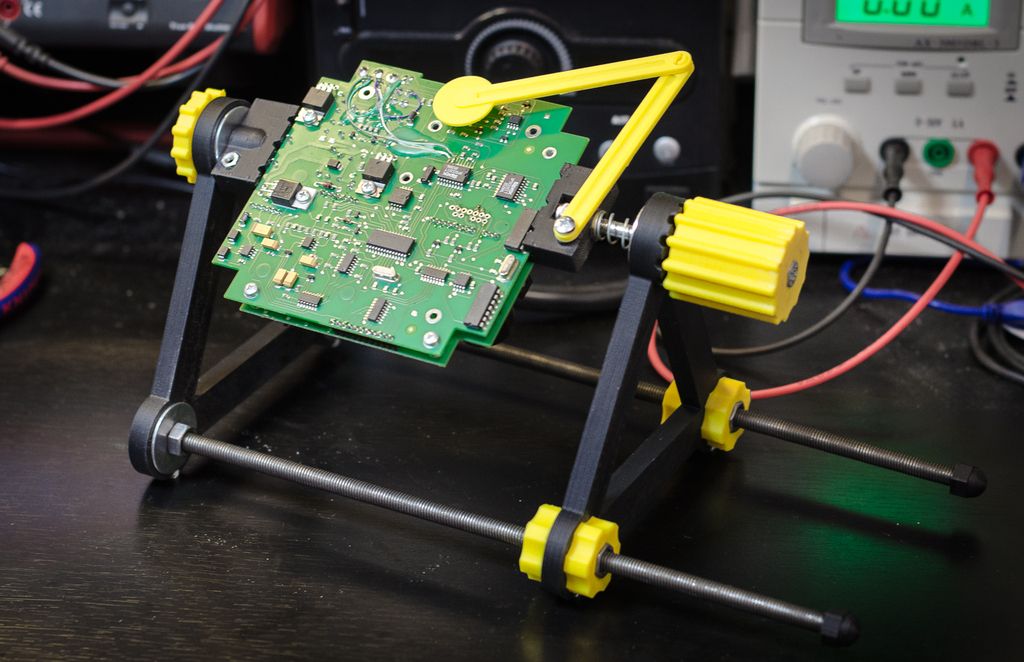
Multi-color printing is no longer a privilege of pricy professional 3D printers. With OverLord, you can create multi-color models in an easy way. No re-rendering the 3D model or code editing needed. You can switch colors anytime during print and make the model as colorful as you wish.
We designed OverLord to be extremely user-friendly, and easy to use. It comes fully assembled and tested, and requires little configuration during first time use. Once you get the printer, just unpack, plug in power and follow the on-screen prompt to setup. The whole process takes less than 5 minutes, and you are ready to go!
To make life easier, we’ve built a special system which provides auto-leveling and auto-calibration. This means every time you start the printer, it sets up automatically.
There are many reasons why we chose to build OverLord upon Delta mechanism, bigger build volume is definitely among the first. OverLord Pro can handle objects 170 millimeters wide and 260 millimeters tall, 30% taller than the object normal printers can do.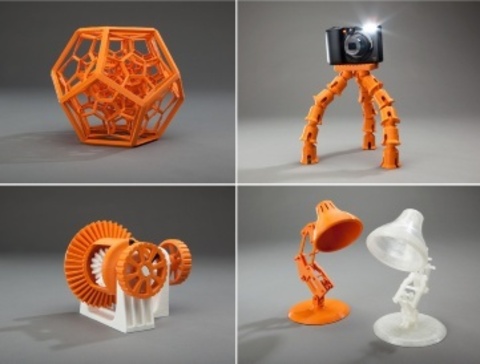
Besides its expanded build volume, this mechanism has a proven record of being highly efficient and economic, requires no long-term maintenance, and is elegant in motion.
With OverLord, you don’t necessarily have to be an expert to create professional-quality, realistic products. There are just many ways to help you make stunning things.
OverLord uses premium stepper motors to print objects of superb quality, at a layer resolution of 100 microns.
The heated plate allows you to print PLA and ABS. You can explore more exciting new materials with OverLord in future.
As a consumer desktop 3d printer, OverLord must be stable enough to deliver consistent quality result on a daily basis. Therefore, we redesigned both the hardware and software to ensure your creation will never be interrupted.
The unique break-resuming feature allows you to stop wherever you want during printing, but no need to start the whole process over again. This means you can leave where it is, have a meeting, watch a game, even take a holiday and then continue printing after coming back.
This means you can leave where it is, have a meeting, watch a game, even take a holiday and then continue printing after coming back.
A power blackout or misoperation could sometime ruin the whole process – but that’s never gonna happen with OverLord. With built-in power protection, you can resume wherever it is after any sudden power break, saving both of your time and ruined mood.
To ensure the precision in printing, we require precise parts. All parts are injection molded and fit perfectly. We also used aerospace alloy to make OverLord strong enough for any possible collisions or shock.
OverLord’s styling is both futurism and minimalism. Designed to look great in your home, office, lab, or classroom, OverLord fits nicely in almost any setting. Custom colors will also be available when stretch goal is hit, select your own color combo and make your friends jealous!
History of 3D printing
In this section, we wanted to trace the history of 3D printing from its inception to the present day, as well as give a forecast regarding the future development of technology.
The first 3d printer was invented by the American Charles Hull, he worked on the technology of stereolithography (SLA), a patent for the technology was issued in 1986. The printer was a fairly large industrial installation. The installation "grew" a three-dimensional model by applying a photopolymerizable material to a moving platform. The basis was a digital model pre-modeled on a computer (3D model). This 3d printer created three-dimensional objects, rising by 0.1-0.2 mm - the height of the layer. Despite the fact that the first device had many disadvantages, the technology has received its application. Charles Hull is also the co-founder of 3dsystems, one of the world's leading manufacturers of industrial 3D printers. nine0003
Charles Hull was not the only one to experiment with 3D printing technology, as in 1986 Carl Deckard invented Selective Laser Sintering (SLS). You can learn more about the method in another article, briefly: a laser beam sinters a powder (plastic, metal, etc. ), while the mass of the powder is heated in the working chamber to a temperature close to the melting point. The basis is also a digital model pre-modeled on a computer (3D model). After the laser passes through the horizontal layer, the chamber is lowered to the layer height (usually 0.1-0.2 mm), the powder mass is leveled with a special device and a new layer is applied. nine0003
), while the mass of the powder is heated in the working chamber to a temperature close to the melting point. The basis is also a digital model pre-modeled on a computer (3D model). After the laser passes through the horizontal layer, the chamber is lowered to the layer height (usually 0.1-0.2 mm), the powder mass is leveled with a special device and a new layer is applied. nine0003
However, the most famous and widespread 3D printing method today is layer-by-layer direction (FDM). The idea of technology belongs to Scott Crump (Scott Crump), the patent dates back to 1988. You can learn more about the method in another article, in short: material (usually plastic) is fed from the heated nozzle of the print head using a stepper motor, the print head moves on linear guides along 1 or two axes, and the platform moves along 1 or 2 axes . The basis of the movement is also a 3D model. The molten plastic is laid on the platform along the established contour, after which the head or platform is moved and a new layer is applied on top of the old one. Scott Crump is one of the founders of Stratasys, which is also one of the leaders in the production of industrial 3D printers. nine0003
Scott Crump is one of the founders of Stratasys, which is also one of the leaders in the production of industrial 3D printers. nine0003
All the devices described above belonged to the class of industrial devices and were quite expensive, so one of the first 3d Dimension printers from Stratasys in 1991 cost from 50 to 220 thousand US dollars (depending on the model and configuration). Printers based on the technologies described above cost even more and until very recently, only a narrow circle of interested specialists knew about these devices.
Everything began to change since 2006, when the RepRap project (from the English Replicating Rapid Prototyper - a self-replicating mechanism for rapid prototyping) was founded, with the goal of creating a self-copying device, which was a 3D printer working on technology FDM (layer by layer deposition). Only, unlike expensive industrial devices, it looked like a clumsy invention made from improvised means. Metal shafts serve as a frame, they also serve as guides for the print head.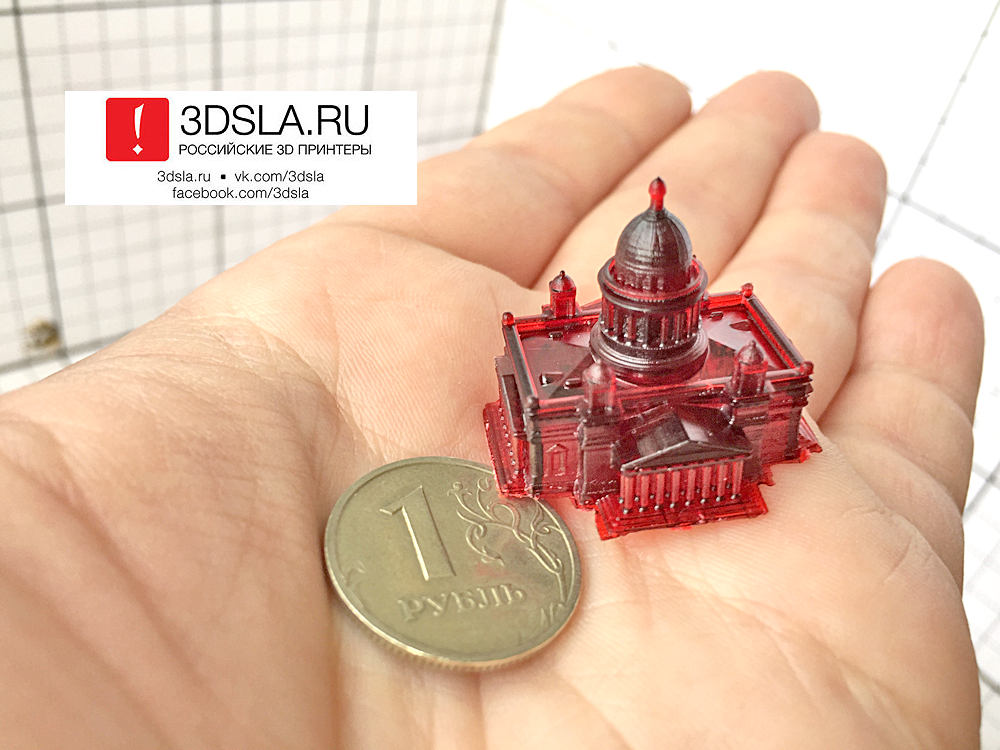 driven by simple stepper motors. The software is open source. Almost all connecting parts are printed from plastic on the 3D printer itself. This idea originated among English scientists and aimed at spreading available additive technologies so that users can download 3D models on the Internet and create the necessary products, thus minimizing the production chain. nine0003
driven by simple stepper motors. The software is open source. Almost all connecting parts are printed from plastic on the 3D printer itself. This idea originated among English scientists and aimed at spreading available additive technologies so that users can download 3D models on the Internet and create the necessary products, thus minimizing the production chain. nine0003
Leaving aside the ideological component, the community (which exists and develops to this day) managed to create a 3d printer accessible to the "ordinary person". So a set of unprinted parts can cost around a couple of hundred US dollars and a finished device from $500. And even though these devices looked unsightly and were significantly inferior in quality to their industrial counterparts, all this was an incredible impetus for the development of 3D printing technology.
As the RepRap project developed, 3D printers began to appear, taking as a basis the base laid down by the movement in technical and, sometimes, ideological terms (for example, commitment to the concept of open source - OpenSource). The companies that made printers tried to make them better both in terms of performance, design and user experience. The first RepRap printers cannot be called a commercial product, since it is not so easy to manage (and even more so to assemble) and it is not always possible to achieve stable work results. Nevertheless, companies tried to close the more than significant gap in quality, leaving a significant gap in cost whenever possible. nine0003
The companies that made printers tried to make them better both in terms of performance, design and user experience. The first RepRap printers cannot be called a commercial product, since it is not so easy to manage (and even more so to assemble) and it is not always possible to achieve stable work results. Nevertheless, companies tried to close the more than significant gap in quality, leaving a significant gap in cost whenever possible. nine0003
First of all, it is worth mentioning the MakerBot company, which started as a startup, took RepRap ideas as a basis and gradually turned them into a product of a new quality.
Their flagship product (and in our opinion the best to this day) remains the MakerBot Replicator 2 3D printer. The model was released in 2012 and later discontinued, but remains one of the most popular 3D printer models to this day " personal" segment (according to 3dhubs). The word "personal" is in brackets because this printer, which cost $2,200 at the time of release, was (and is) primarily used for business purposes, but falls into the personal segment due to its cost.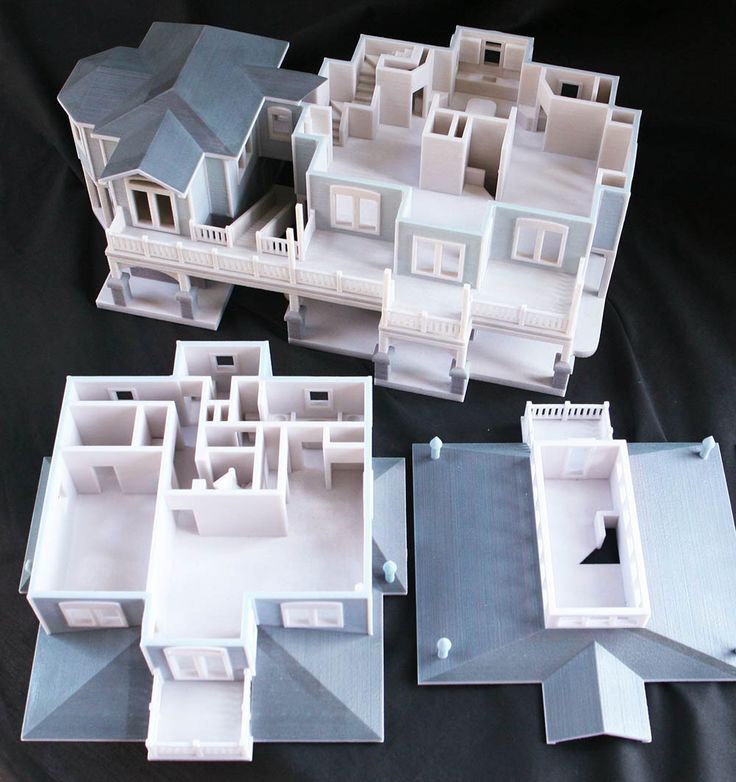 This model differs from its progenitors (RepRap), being, in fact, a finished commercial product. Manufacturers abandoned the concept of OpenSource, closing all sources and software codes. nine0003
This model differs from its progenitors (RepRap), being, in fact, a finished commercial product. Manufacturers abandoned the concept of OpenSource, closing all sources and software codes. nine0003
In parallel with the release of equipment, the company actively developed the Thingiverse resource, which contains many models for 3d printing, available for download for free. During the development of the first printer and beyond, the community has helped the company a lot, testing the product and offering various upgrades. After the release of the Replicator 2 (and the closure of development), the situation has changed. You can learn more about the history of MakerBot and other companies and people associated with 3d printing by watching the film Print the legend. nine0003
This film also highlights the history of Formlabs, one of the first companies to launch an affordable 3D printer based on SLA (Strereolithography) technology. The company raised funds for the first FORM 1 model through crowdfunding, encountered production difficulties, but eventually released an affordable and productive 3D printer, closing the quality gap described above.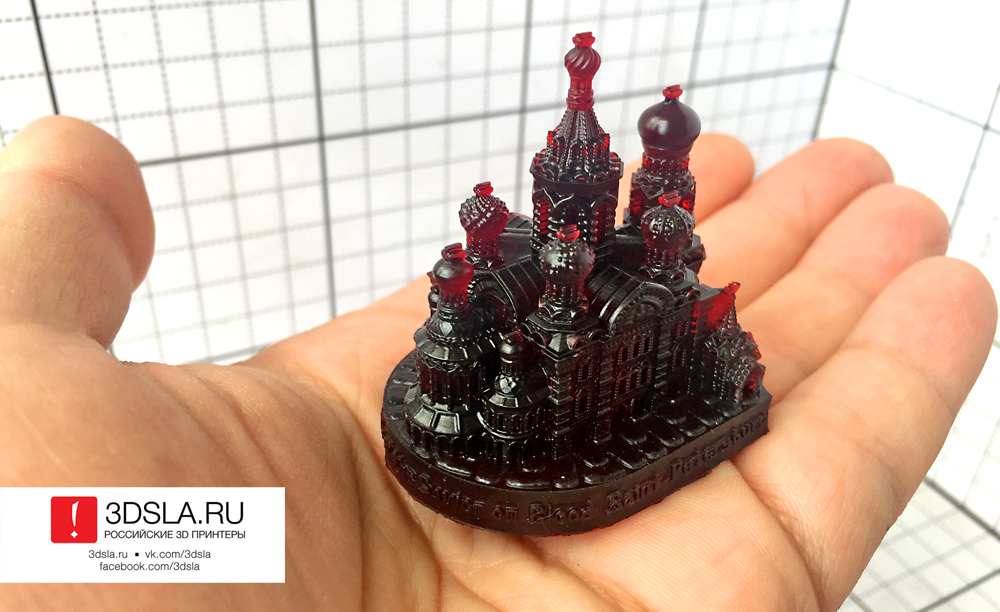
And although the 3D printers described above were far from perfect, they laid the foundation for the development of affordable 3D printing technology, which continues to this day. At the moment, the quality of FDM and SLA printers is increasing, but there is no significant price reduction, rather, on the contrary, it is growing slightly. Along with FDM and SLA, many companies are developing in the field of powder sintering (SLS), as well as metal printing. Despite the fact that such printers cannot be called affordable, their price is much lower in comparison with analogues from the professional segment. It is also worth noting the development of the line of materials, in addition to the standard ABS and PLA plastics, today many different materials are used, including nylon, carbon fiber and other durable and refractory materials. nine0003
Personal 3d printers of today are very close to professional devices, the development of which also does not stop. In addition to the "founders" of the technology (Stratasys, 3dsystems), many small companies specializing in industrial 3D printing technologies (metal in particular) have emerged.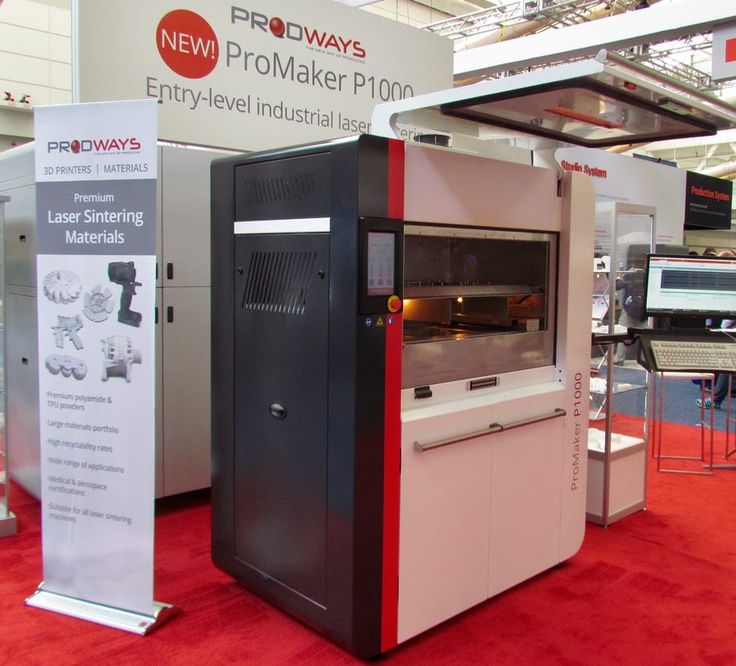 3D printing is also attracting the attention of large corporations, which, with varying degrees of success, are striving to take their place in a growing market. Here it is worth highlighting HP, which recently released the HP Jet Fusion 3D 4200 model, which has gained popularity among 3d printing professionals (as of 2018, it is at the top of the ranking of professional 3D printers in the quarterly reports of the 3dhubs portal). nine0003
3D printing is also attracting the attention of large corporations, which, with varying degrees of success, are striving to take their place in a growing market. Here it is worth highlighting HP, which recently released the HP Jet Fusion 3D 4200 model, which has gained popularity among 3d printing professionals (as of 2018, it is at the top of the ranking of professional 3D printers in the quarterly reports of the 3dhubs portal). nine0003
However, 3D printing technologies are developing not only in breadth, but also in depth. One of the main disadvantages of 3D printing, compared to other production methods, is the low speed of creating models. A significant advance in terms of accelerating 3D printing was the invention of CLIP technology by CARBON, printers operating on this technology can produce models 100 times faster than classic SLA technology.
There is also a constant expansion of the range, properties and quality of materials and post-processing of products.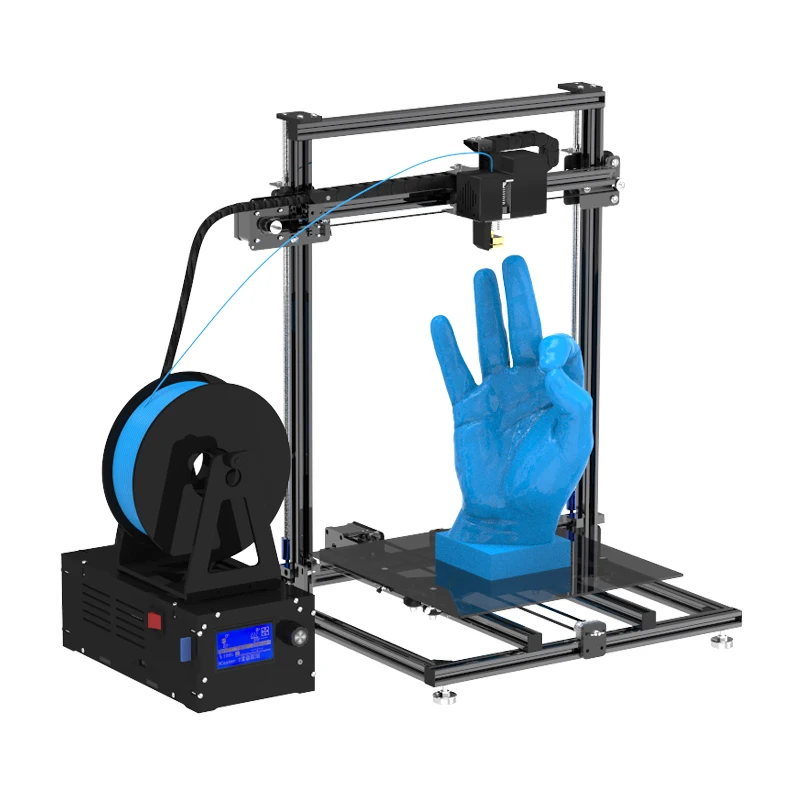 All this accelerates the transition to the use of 3d printers in production, and not just as prototyping devices. Today, many large and not only companies and organizations are closely using a 3D printer in their production chain: from consumer goods manufacturers NIKE and PUMA to BOEING and SPACE X (the latter prints engine parts for its rockets that could not be made in any other way) . nine0003
All this accelerates the transition to the use of 3d printers in production, and not just as prototyping devices. Today, many large and not only companies and organizations are closely using a 3D printer in their production chain: from consumer goods manufacturers NIKE and PUMA to BOEING and SPACE X (the latter prints engine parts for its rockets that could not be made in any other way) . nine0003
In addition to the "classic" scope of 3D printing, today more and more often you can see news about how a house or some organ (or rather, a small part of it) was printed on a 3D printer from bio-material. And this is true, several companies around the world are testing or already partially using 3D printing in the construction of buildings and structures. This mainly concerns the contour pouring of walls (similar to the FDM method) with a special composite concrete mixture. And in Amsterdam there is a 3D printed bridge project and this list will only expand over time, since the use of 3D printing in construction can significantly reduce costs and increase the speed of work at certain stages.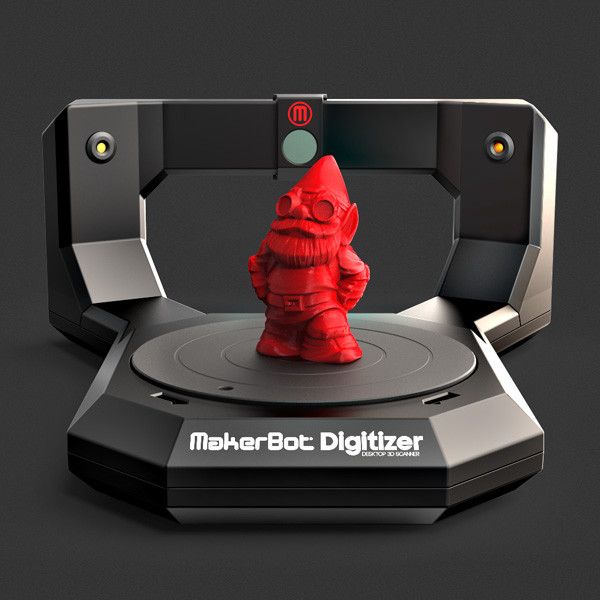 nine0005 With regards to medicine, here 3D printing also finds application, but at the moment it is not printing organs, but rather the use of technology in prosthetics (of various kinds) and bone replacement. Also, 3D printing technology is widely used in dentistry (SLA technology). Regarding the printing of organs, this is still far in the future, at the moment bio-3D printers are experimental facilities in the early stages, the success of which is limited to printing a few limited-viable cells. nine0003
nine0005 With regards to medicine, here 3D printing also finds application, but at the moment it is not printing organs, but rather the use of technology in prosthetics (of various kinds) and bone replacement. Also, 3D printing technology is widely used in dentistry (SLA technology). Regarding the printing of organs, this is still far in the future, at the moment bio-3D printers are experimental facilities in the early stages, the success of which is limited to printing a few limited-viable cells. nine0003
Looking to the future, it is safe to say that 3D printing technology will expand both in breadth and depth, improving technology, speeding up processes, improving quality and improving material properties. 3D printers will increasingly replace old methods in production chains of various scales, and world production, due to this, will move towards the “on demand” scheme of work, increasing the degree of product customization. Perhaps someday, 3D printers will be widely used at the household level for the production of necessary things (the dream and goal of the RepRap movement), but this requires not only the development of technology, but also a paradigm shift in social thinking, as well as the development of a powerful design ecosystem ( 3d modeling) products (which is often forgotten).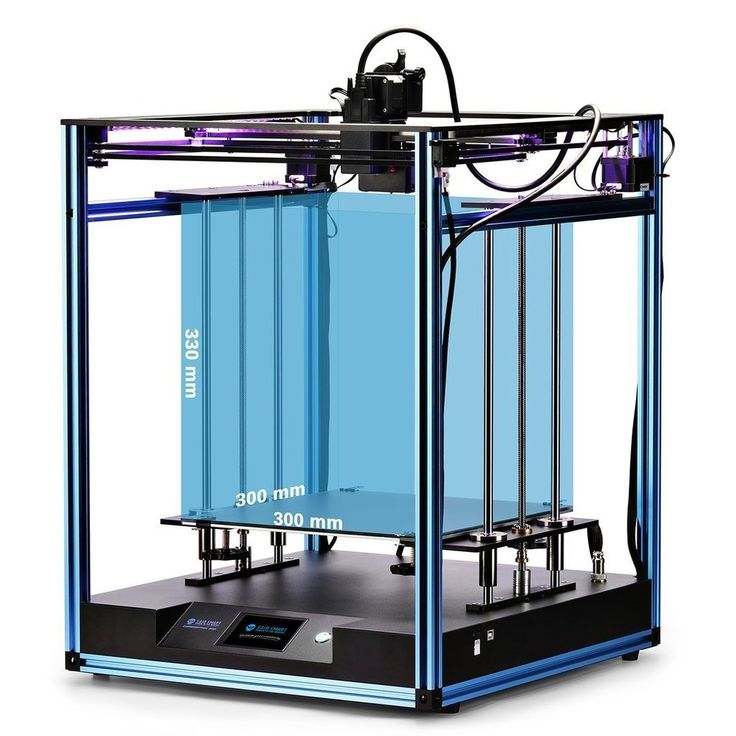 nine0003
nine0003
3d printing of houses (and other structures) will no doubt also develop, reducing costs and production time, which, together with the development of new approaches in architecture and urban planning (such as modular construction and the prefabricated method), will give a tangible impetus to development the industry as a whole.
Biological 3D printers will be an important tool in scientific research. However, before they appear in hospitals and clinics, where they will print new organs, it is still very, very far away (in fact, this is science fiction). nine0003
“My dream is to make 3D printing with composites a globally demanded production technology”
Today, Skolkovo Foundation residents travel to international exhibitions, show developments to the country’s leadership, and will soon begin shipping the first 3D printers. We talked about the past and future of the startup, global projects and an unexpected move to Luxembourg with Anisoprint CEO Fedor Antonov.
3DPulse.ru: Hello, Fedor. Tell us about the founding of Anisoprint. How was the idea of 3D printing with composites born? nine0071
Fedor Antonov: Good afternoon! The idea was born while working at Skoltech, in the center for composite materials. We have a strong team in the field of design and optimization of composite products, with a common vision. We understood how optimal parts made of composites should look like, how to correctly use the unique property of these materials - anisotropy, but the technology capable of manufacturing such parts did not exist at that time. Thus was born the idea of 3D printing as a possible approach to the realization of our ideas. nine0003
3DPulse.ru: In 3 years you have come a long way from an idea to a working 3D printer. What difficulties did you encounter when creating the device?
Fedor Antonov: There were a lot of difficulties, it's impossible to list them all. There were some that managed to be solved quite quickly, there are those that have not been solved so far. If we talk about the technical side, the main problem when printing with composites is impregnation. The fact is that structural fibers consist of hundreds and thousands of the thinnest threads, and driving viscous plastic into the gaps between these threads is not an easy task. We solved this problem using a "two-matrix" approach. It consists in the fact that the fiber is pre-impregnated with a thermoplastic polymer (resin), the so-called taupreg is made - a composite fiber. Then this fiber is already used in the printing process with a thermoplastic polymer - plastic. Since the viscosity of thermoplastics is one to two orders of magnitude lower than that of thermoplastics, the impregnation process is greatly simplified and it is possible to ensure low porosity and good adhesion of the fibers to the polymer. nine0003
There were some that managed to be solved quite quickly, there are those that have not been solved so far. If we talk about the technical side, the main problem when printing with composites is impregnation. The fact is that structural fibers consist of hundreds and thousands of the thinnest threads, and driving viscous plastic into the gaps between these threads is not an easy task. We solved this problem using a "two-matrix" approach. It consists in the fact that the fiber is pre-impregnated with a thermoplastic polymer (resin), the so-called taupreg is made - a composite fiber. Then this fiber is already used in the printing process with a thermoplastic polymer - plastic. Since the viscosity of thermoplastics is one to two orders of magnitude lower than that of thermoplastics, the impregnation process is greatly simplified and it is possible to ensure low porosity and good adhesion of the fibers to the polymer. nine0003
The second important technical point was the device for cutting and feeding the fiber - when printing with a drag, it is necessary to periodically switch between "composite" and "plastic" nozzles, move the extruder "idle".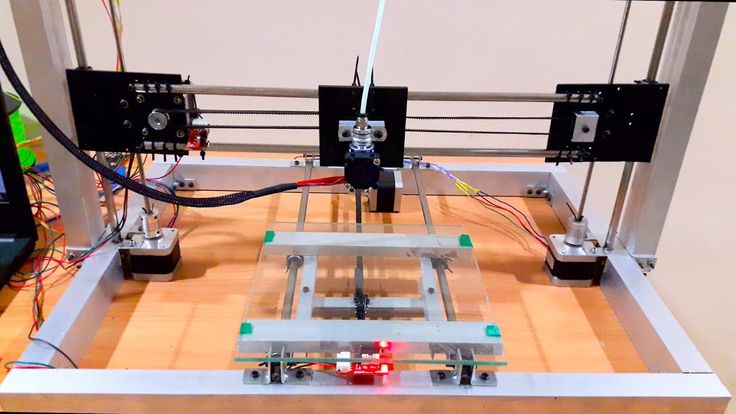 To do this, the thin reinforcing fiber must be cut off at the place where the printing stopped, and, more importantly, the fiber supply must be reintroduced in time. Thanks to an elegant engineering solution, the cut-feed mechanism has been realized in a very compact and efficient manner. In addition, there were a lot of minor problems: from the choice of components and electronics to the layout of the case, decorative elements. We suffered with the design for a long time - we liked the initial design, developed by order of our partners Karfidov Lab, but it was not easy to replicate it for a series without significant costs for equipment, so we made a strong-willed decision to change the design. In our opinion, it turned out pretty well too. I'm not talking about the problems of finding resources for the implementation of the project - the first year and a half was almost completely spent on finding money, the project was supported by personal funds. Only after we managed to find the necessary resources, we started full-fledged work on the product.
To do this, the thin reinforcing fiber must be cut off at the place where the printing stopped, and, more importantly, the fiber supply must be reintroduced in time. Thanks to an elegant engineering solution, the cut-feed mechanism has been realized in a very compact and efficient manner. In addition, there were a lot of minor problems: from the choice of components and electronics to the layout of the case, decorative elements. We suffered with the design for a long time - we liked the initial design, developed by order of our partners Karfidov Lab, but it was not easy to replicate it for a series without significant costs for equipment, so we made a strong-willed decision to change the design. In our opinion, it turned out pretty well too. I'm not talking about the problems of finding resources for the implementation of the project - the first year and a half was almost completely spent on finding money, the project was supported by personal funds. Only after we managed to find the necessary resources, we started full-fledged work on the product. nine0003
nine0003
3DPulse.ru: Have you done anything else besides the 3D printer? Were there other projects that, for one reason or another, never became public?
Fedor Antonov: Our focus is technology in general. Composer printers are the first step towards the realization of a global goal - the creation of a new industrial technology that is in demand on the world market, which will occupy a significant niche in the production of a wide range of products for mechanical engineering, medicine, and consumer goods. Therefore, we did everything that, in our opinion, brought this goal closer in one way or another. Now we are focusing on Composer printers, but we are trying to keep up in the industrial segment. For example, in May, at the metalworking exhibition, we showed the first prototype of the Anisoprint ProM-PT industrial 3D printer based on an industrial robot. We plan to demonstrate a working prototype at the formnext exhibition in Frankfurt am Main in November this year. We also carry out pilot projects in the interests of large industrial players, we make custom industrial versions of our printheads, which can be installed on any CNC multi-axis manipulator. nine0003
We also carry out pilot projects in the interests of large industrial players, we make custom industrial versions of our printheads, which can be installed on any CNC multi-axis manipulator. nine0003
3DPulse.ru: What funds do you use for development: is it government grants or investor funds?
Fedor Antonov: Basically, these are funds earned from the sale of industrial prototypes and funds from a private investor that we managed to attract in December 2016. We use grants whenever possible, but we try not to abuse them. Grants limit your freedom of action too much and do not allow you to make a pivot in time if something goes wrong. nine0003
3DPulse.ru: What companies and scientific organizations does Anisoprint cooperate with in the field of creating materials and equipment?
Fedor Antonov: We cooperate with Moscow State University, FSUE VIAM, FSUE IREEA, Sibur, DuPont, LIST (Luxembourg Institute of Science and Technology). Equipment - Siemens, Bosch.
Equipment - Siemens, Bosch.
3DPulse.ru: Does being a Skolkovo Foundation resident help you?
Fedor Antonov: Yes, of course. These are tax incentives, infrastructure, and an “ecosystem”. Now Skolkovo is helping us a lot with the development of international business, in particular, with the organization of sales of printers in Germany. For this, special thanks to Benjamin Wilkening, Vice President of the Skolkovo Foundation for International Investments, who has done a lot for us in this direction. nine0003
3DPulse.ru: Your direct competitors are Markforged. Let's ask directly: why is the Composer 3D printer better than the American one?
Fedor Antonov: Firstly, Markforged has a closed system and only one type of plastic - nylon. Nylon is a good material, but it also has a lot of disadvantages. For example, it has a very high moisture absorption. Because of this, it must be stored in special containers and dried before printing, otherwise the plastic “swallowed” with moisture will literally boil during printing.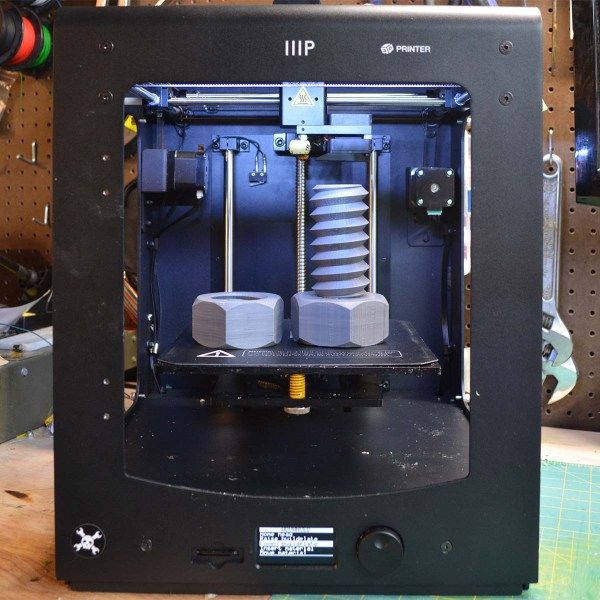 Similarly, the final parts, gaining moisture, lose half of their properties. We have an open system - take any plastic and reinforce it. This is very valuable for clients from the scientific and research field. In addition, we have a wide range of sizes, software, the possibilities of which are much wider, the reinforcing material - composite fiber - is several times cheaper than Markforged. And that's not all: unlike Markforged, we can print mesh designs with fiber intersections inside the layer. These are just the very structures that are the most optimal for composites. On the side of Markforged is a name, powerful marketing and, to their credit, a cool design and a quality product. Here we try not to give in. nine0003
Similarly, the final parts, gaining moisture, lose half of their properties. We have an open system - take any plastic and reinforce it. This is very valuable for clients from the scientific and research field. In addition, we have a wide range of sizes, software, the possibilities of which are much wider, the reinforcing material - composite fiber - is several times cheaper than Markforged. And that's not all: unlike Markforged, we can print mesh designs with fiber intersections inside the layer. These are just the very structures that are the most optimal for composites. On the side of Markforged is a name, powerful marketing and, to their credit, a cool design and a quality product. Here we try not to give in. nine0003
3DPulse.ru: Anisoprint will start shipping the first 3D printers in autumn, pre-order is now open. How many printers have already been ordered and who are their buyers?
Fyodor Antonov: A little more than 30 pieces are currently on pre-order.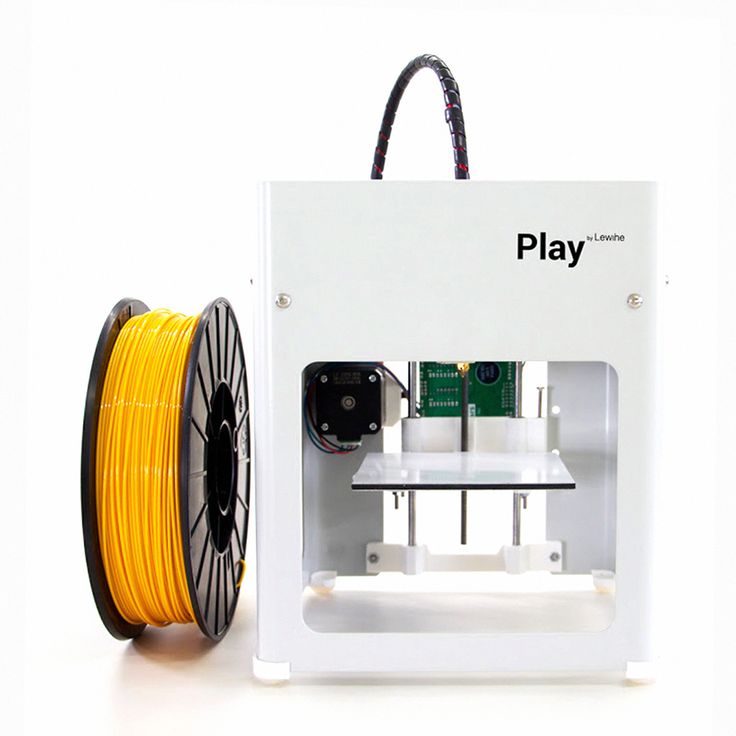 The main customers are institutes, universities, start-ups and small companies, individuals.
The main customers are institutes, universities, start-ups and small companies, individuals.
3DPulse.ru: You recently announced that the Composer printer can print discs for Formula 1. In what other industries can products grown on Anisoprint equipment be used? nine0071
Fedor Antonov: Composer is a desktop 3D printer in the Prosumer segment (professional consumer). The main segments, as I said, are R&D, small companies in the field of drones, various robotic devices, sports goods, 3D printing centers and industrial companies - but not for the production of final products, but for the manufacture of production tooling and prototyping. In order to print the same discs, you need to go a long way related to the testing and certification of materials and equipment. We will do all this for industrial printers. Composer's niche is beyond certification. nine0003
3DPulse.ru: Are there any real cases that can be cited as an example?
Fedor Antonov: Recently there was a very interesting case with levers of the buoyancy system for a paraathlete diver.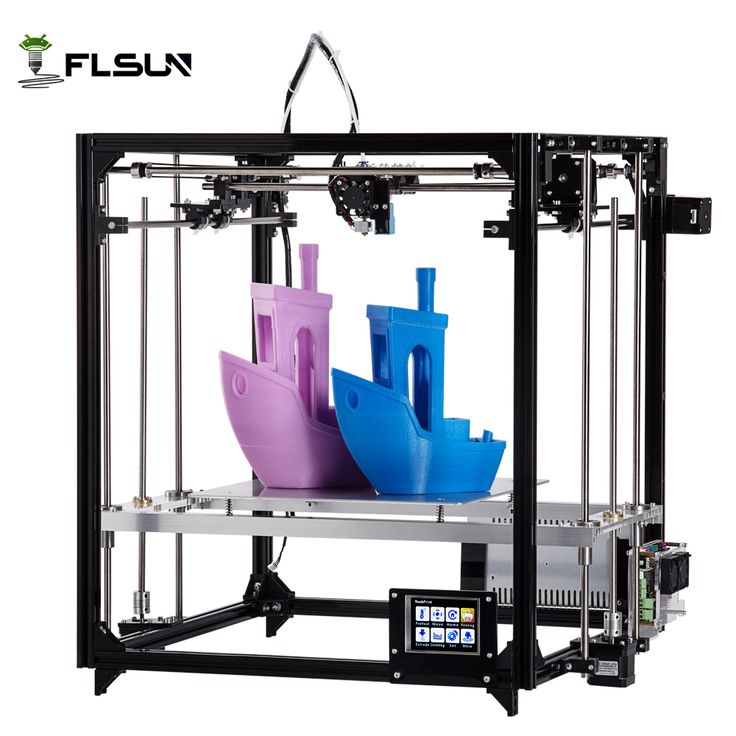 Engineers from the Moscow Poly designed and we made strong and reliable levers that helped the diver make a record dive.
Engineers from the Moscow Poly designed and we made strong and reliable levers that helped the diver make a record dive.
3DPulse.ru: One of the publications wrote that Anisoprint plans to send a 3D printer to the ISS. Tell me more. nine0071
Fedor Antonov: This was our joint idea with partners from Sputniks. Unfortunately, so far everything ended in nothing - together with our colleagues, we prepared documents for an application for a space experiment, but the application was rejected by the NTS ( scientific and technical council - ed. ) at TsNIIMash. Perhaps we have not finalized the lobbying part a bit. We didn’t write the right letters, didn’t talk to the right people in advance - we didn’t have such an experience. Then, a young girl came out to defend the application. They told her right there - “What kind of kindergarten?”. In general, relations with Roskosmos did not work out, although the idea, in my opinion, is very promising, we need to spend a little more resources and effort to push it through.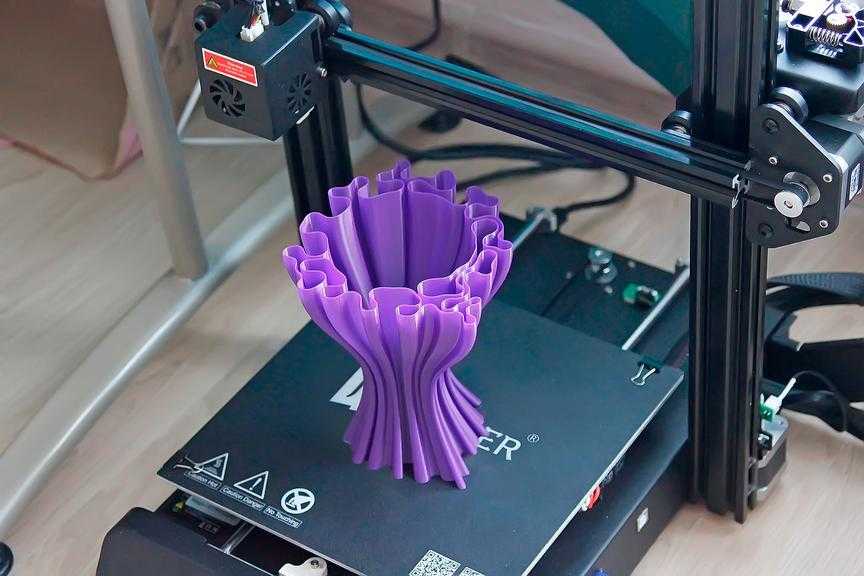 Now we will try to develop this topic together with the European Space Agency and see what happens. nine0003
Now we will try to develop this topic together with the European Space Agency and see what happens. nine0003
3DPulse.ru: What other projects in the field of 3D printing with composites are planned for implementation?
Fedor Antonov: The printing of rims, in my opinion, is a very promising direction. Together with partners, we are developing a specialized machine on which we will work out the technology. We also start projects together with partners for printing automotive suspension elements - levers, struts. Printing of orthopedic products - insoles, corsets, devices and splints. There is an interesting project on the handle of a sports bow. In general, it’s impossible to list everything - stay tuned! nine0003
3DPulse.ru: In April, Anisoprint announced registration in Luxembourg. This caused a mixed reaction on the network - they started talking about a brain drain. Explain why this is necessary and how this fact will affect work in Russia?
Fedor Antonov: In order to start developing industrial equipment, we need additional investments, which we plan to attract in Europe.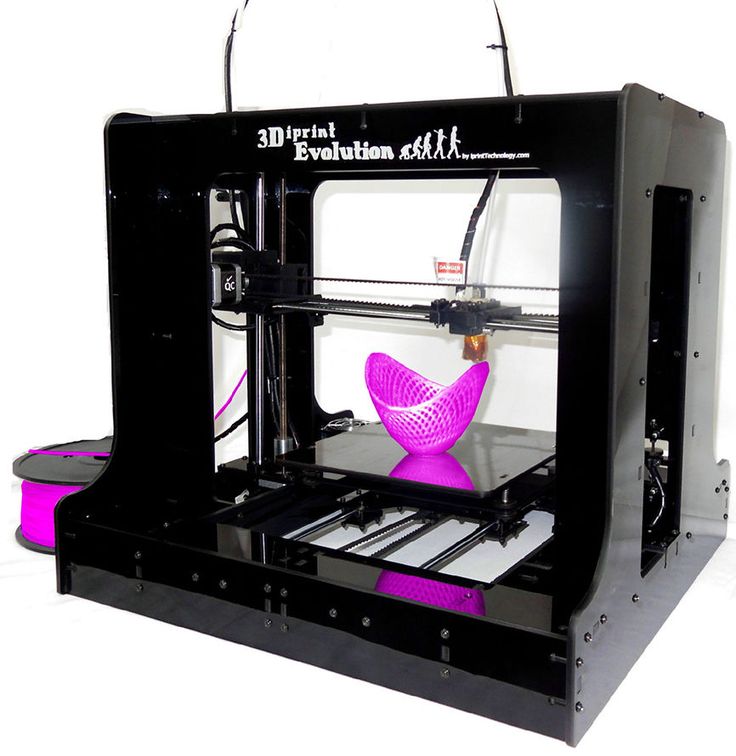 As a startup in Russian jurisdiction, we have a 50-70 percent discount to the valuation. That is, for the same money that we can raise in Europe, in Russia we will most likely give the investor control over the company. Many companies do not want to cooperate directly with a Russian company - they have their own risks associated with sanctions. In addition, unfortunately, the “made in Russia” label is not in demand in Europe - in Germany, for example, we lose up to half of our customers with such a label. At the same time, all R&D remains in Russia, but the company becomes global. Well, we are not going to deny our Russian roots. nine0003
As a startup in Russian jurisdiction, we have a 50-70 percent discount to the valuation. That is, for the same money that we can raise in Europe, in Russia we will most likely give the investor control over the company. Many companies do not want to cooperate directly with a Russian company - they have their own risks associated with sanctions. In addition, unfortunately, the “made in Russia” label is not in demand in Europe - in Germany, for example, we lose up to half of our customers with such a label. At the same time, all R&D remains in Russia, but the company becomes global. Well, we are not going to deny our Russian roots. nine0003
3DPulse.ru: Judging by the abundance of promising tasks, your development hit the mark. Did you expect such a success?
Fedor Antonov: Success is still ahead, I'm sure of it. This is just the beginning. From the very beginning, I had no doubt that the technology would be in demand, but there is still a lot to be done in order for the technology to get a real "registration" in the industry.


